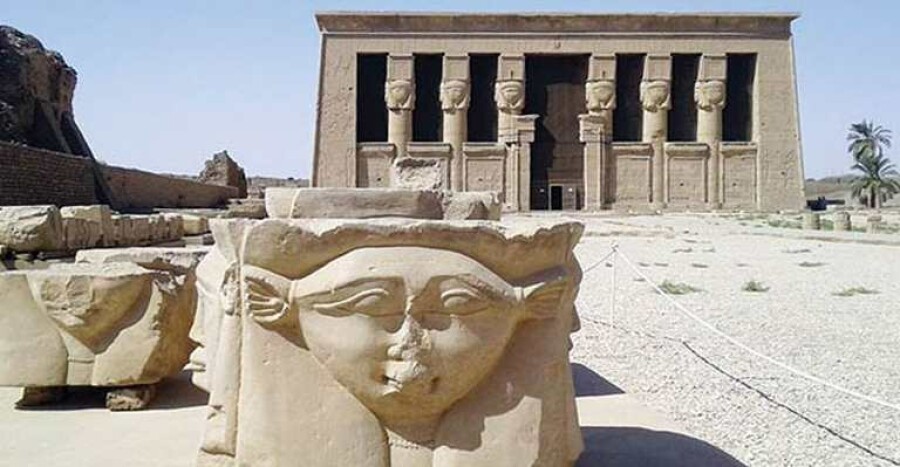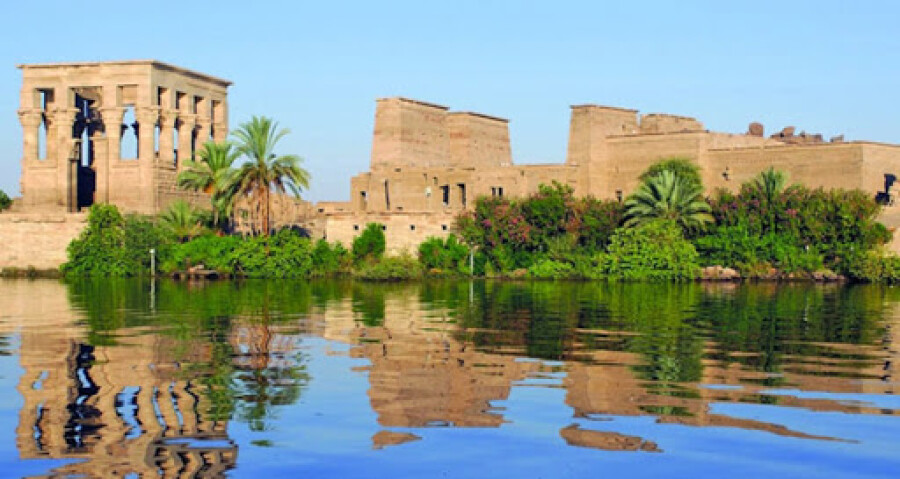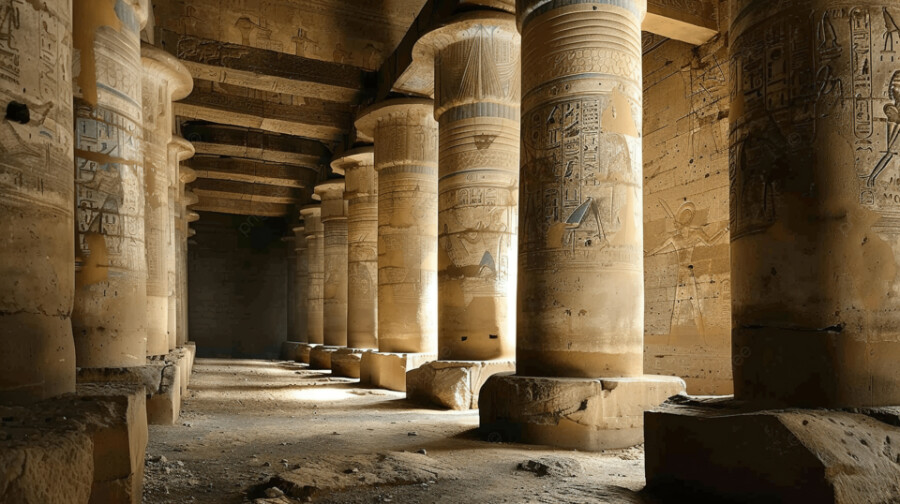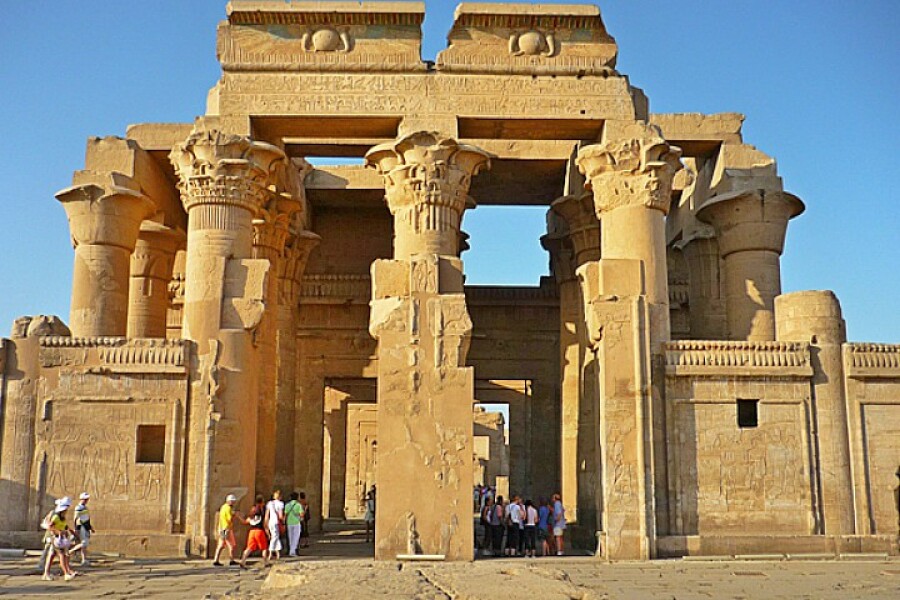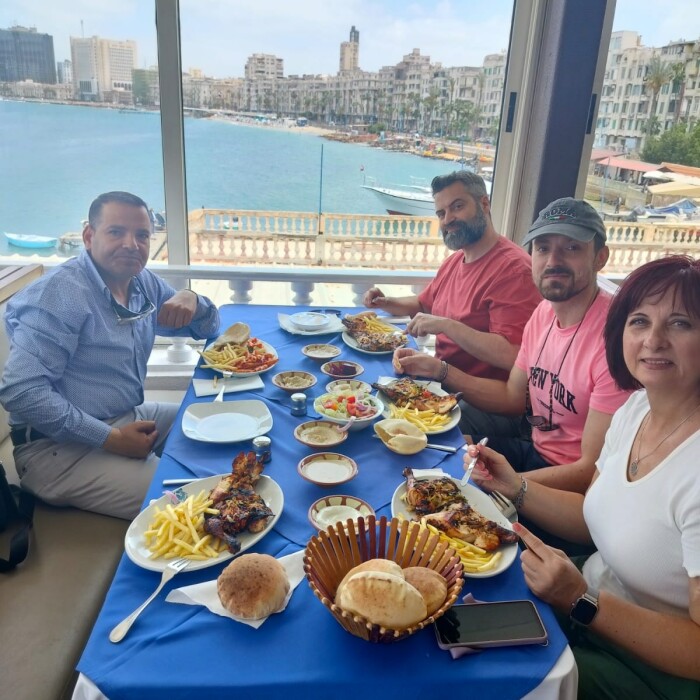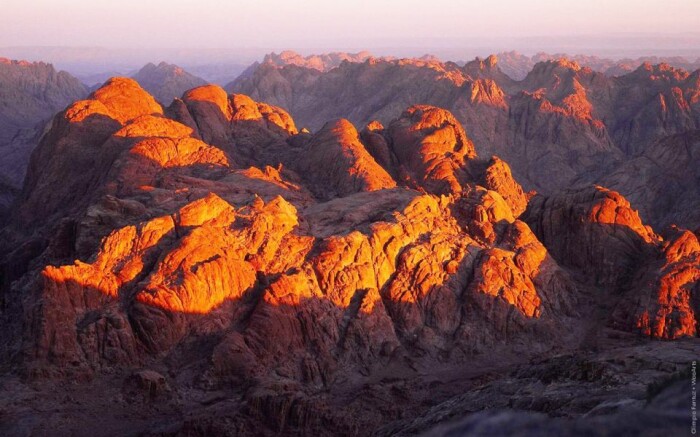Egypt Bus tour - 4 nights Cairo / 1 night Minia / 1 nigh Abidos / 4 nights Nile cruise
Aswan, Abu Simbel, Luxor, Abydos, Cairo, Minya, Meidum, Tuna El Gebel, Beni Hassan, Tal El Amarna And Dendera.
Excellent
4.9/5
Duration
11 Days
Type
Private
Run
Everyday
Location
Aswan, Abu Simbel, Luxor, Abydos, Cairo, Minya, Meidum, Tuna El Gebel, Beni Hassan, Tal El Amarna And Dendera
Overview
Nile Dream Tours, will take you where no one has ever arrived. We organize a remarkable trip that the other tour companies for lack of information, experience can't do it. The prince of the programs, the jewel of the double crown of Egypt.
With ''Egypt Bus Tour'' you can visit and discover all the pyramidal groups, Amarna, and the rest of the monuments of Middle Egypt, Abydos, Dendera as well as all the temples of the cruise...etc. You dare?
With ''Egypt Bus Tour'' you can visit and discover all the pyramidal groups, Amarna, and the rest of the monuments of Middle Egypt, Abydos, Dendera as well as all the temples of the cruise...etc. You dare?
Itinerary
Day 1
Nile Dream Tours representative will assist you upon your arrival to Cairo Airport, transfer to the hotel and accommodation.
Day 2
After breakfast, you will meet with our tour guide then we will visit:
Giza plateau, where the 4th dynasty pyramids were constructed Khufu (Cheops) pyramid, it is the oldest of the Seven Wonders of the Ancient World and the only one that stands until now, it is the most attractive monument on the plateau 146.59 meters high and its sides at the base reached 230.37 meters in length. The tilt of their faces was 52 degrees. It is the greatest monument in Egypt and has almost 2,300,000 stone blocks. As an Arab proverb says: "man fears time, but time fears pyramids."
Khafra (Khefern) pyramid is 136.4 meters high, each side measures 215.25 meters and the inclination of its faces is just over 53 degrees. Its estimated volume is more than 1.6 million cubic meters. On its vertex remains of the old original shiny limestone covering can still be seen.
The pyramid of Menkaura (Mykerinos) whose base measures 103.4 meters on each side and its original height was 65.5 meters, with a slope on all four sides of 51 degrees. It conserves at the base 16 courses of red granite that corresponded to the lower cladding of the monument. We will continue to visit the Valley Temple and the Great Sphinx built by Pharaoh Khafra (Khefern) it is 73 meters long, and almost 20 meters high.
Saqqara necropolis, there you visit the Pyramid of Djoser the earliest stone building in Egypt built in the 27th century BC during the III Dynasty for the burial of Pharaoh. The pyramid structure rises above the plateau in a series of six stepped ‘mastabas" and was built in several stages, beginning with an initial square mastaba and that its plan was changed several times during the construction and finally was surrounded by a complex of dummy buildings enclosed within a niche limestone wall over 10 m high, all this was designed by the genius architect Imhotep. The burial chamber has been closed for restoration for decades but recently was opened
Lunch in a local restaurant and then you continue the visit to the group of pyramids at Dahshour where you can visit the Red Pyramid 2700 B. C., of king Senfru dynasty IV, called so, due to the color of limestone used in constructing the pyramid’s core, the casing of white limestone is now completely missing It is 220 length and 104 High The entrance is on the northern side of the pyramid leads to three chambers the second chamber coincides with the vertical axis of the structure.about4 km to the south is the Bent Pyramid recently opened for visitors and popularly called the Devil's Mouth since it is very difficult to reach its burial chamber.
After this visit transferred to the hotel.
Giza plateau, where the 4th dynasty pyramids were constructed Khufu (Cheops) pyramid, it is the oldest of the Seven Wonders of the Ancient World and the only one that stands until now, it is the most attractive monument on the plateau 146.59 meters high and its sides at the base reached 230.37 meters in length. The tilt of their faces was 52 degrees. It is the greatest monument in Egypt and has almost 2,300,000 stone blocks. As an Arab proverb says: "man fears time, but time fears pyramids."
Khafra (Khefern) pyramid is 136.4 meters high, each side measures 215.25 meters and the inclination of its faces is just over 53 degrees. Its estimated volume is more than 1.6 million cubic meters. On its vertex remains of the old original shiny limestone covering can still be seen.
The pyramid of Menkaura (Mykerinos) whose base measures 103.4 meters on each side and its original height was 65.5 meters, with a slope on all four sides of 51 degrees. It conserves at the base 16 courses of red granite that corresponded to the lower cladding of the monument. We will continue to visit the Valley Temple and the Great Sphinx built by Pharaoh Khafra (Khefern) it is 73 meters long, and almost 20 meters high.
Saqqara necropolis, there you visit the Pyramid of Djoser the earliest stone building in Egypt built in the 27th century BC during the III Dynasty for the burial of Pharaoh. The pyramid structure rises above the plateau in a series of six stepped ‘mastabas" and was built in several stages, beginning with an initial square mastaba and that its plan was changed several times during the construction and finally was surrounded by a complex of dummy buildings enclosed within a niche limestone wall over 10 m high, all this was designed by the genius architect Imhotep. The burial chamber has been closed for restoration for decades but recently was opened
Lunch in a local restaurant and then you continue the visit to the group of pyramids at Dahshour where you can visit the Red Pyramid 2700 B. C., of king Senfru dynasty IV, called so, due to the color of limestone used in constructing the pyramid’s core, the casing of white limestone is now completely missing It is 220 length and 104 High The entrance is on the northern side of the pyramid leads to three chambers the second chamber coincides with the vertical axis of the structure.about4 km to the south is the Bent Pyramid recently opened for visitors and popularly called the Devil's Mouth since it is very difficult to reach its burial chamber.
After this visit transferred to the hotel.
Day 3
Breakfast at the hotel, in the morning we will move to visit The Meidum pyramid lies 50 km south of Dashur. The king Huni, have laid the foundations at the end of Dynasty III – and finished by Snefru, Huni’s son and successor and the first king of Dynasty IV, 2700 bc. It was constructed in steps in the manner of the old-style step pyramids, and then filled with a better quality of stone to create a smooth surface, and it is believed that it was built in three phases of construction. Phase I, consisted of the building of a seven stepped structure, which was then enlarged and covered in phase II and filled in with its final casing in stage III, Therefore it is considered the first ‘true’ pyramid and the transition point between the early step pyramids and the complete pyramids at Giza.
The pyramid is entered from the north face, 18.5 m above the ground, now a staircase leads to the entrance hole, and a low passage slopes from the entrance down to the bedrock beneath the base of the structure. Then a short horizontal passage with a small antechamber and a niche on the right-hand side leads to a vertical shaft and the burial chamber at the original ground level. There you can see the high corbelled walls, where there are still traces of an ancient wooden beam, was used to facilitate lifting the sarcophagus.
We will finish the visit and continue on our way about 160 km further south to go to the Governorate of Al Minia where we will get lunch and continue visiting the Necropolis of Beni Hassan ;
The tombs date mostly to Dynasties XI and XII .12 tombs are decorated, and four are open to visitor characterized by painted scenes of daily life, recreation and military activities.
Tomb of Baqet III -BH15
Baqet was provincial governor of Menat-Khufu (modern el-Minia) during the later years of Dynasty XI. The walls of the tomb have many painted scenes depicting the desert hunt, Industrial scenes of weaving and spinning, hunting and fishing in the marshes, catching birds and gathering papyrus, battle scenes, wrestlers, funerary scenes, also include recreational scenes of sports and playing senet
Tomb of Khety -BH17
Khety was the son of Baqet, his tomb is similar to that of his father’s; the walls of the tomb are decorated with scenes of fowling and the papyrus harvest, hunting in the desert. Khety and his wife are shown presiding over the activities and watch women dancing and playing games, Clappers and dancers and musicians are shown before Khety’s statue being dragged on a sledge. There are long scenes of men practising unarmed combat or wrestling. The movements can be seen easily because the bodies are painted in contrasting shades
Tomb of Amenemhet- BH2
Amenemhet, dates to Dynasty XII, was the last governor of the province during the reign of Senwosret I. The walls have scenes of agriculture and industries, hunting in the desert, military activities and funeral rites with offering-bringers. Amenemhet sits with his wife at a table containing all the produce of his land.
Tomb of Khnumhotep II- BH3
Khnumhotep II was a successor of Amenemhet His titles include ‘Hereditary Chief’ ‘King’s Acquaintance’ and ‘One who is Beloved of his God’. The scenes are more colorful and livelier and make it the most interesting of the Beni Hasan tombs. On the north wall is a famous scene depicting a caravan of Asiatic in their striped robes bringing gazelles and other items to trade, also two beautiful scenes of Khnumhotep with his family, fowling and snaring birds in the marshes in a papyrus skiff. On the base of the wall can see Khnumhotep’s well-preserved autobiographical text. There is a magnificent view from up the mountain.
We will return to the Minia hotel, accommodation, dinner.
The pyramid is entered from the north face, 18.5 m above the ground, now a staircase leads to the entrance hole, and a low passage slopes from the entrance down to the bedrock beneath the base of the structure. Then a short horizontal passage with a small antechamber and a niche on the right-hand side leads to a vertical shaft and the burial chamber at the original ground level. There you can see the high corbelled walls, where there are still traces of an ancient wooden beam, was used to facilitate lifting the sarcophagus.
We will finish the visit and continue on our way about 160 km further south to go to the Governorate of Al Minia where we will get lunch and continue visiting the Necropolis of Beni Hassan ;
The tombs date mostly to Dynasties XI and XII .12 tombs are decorated, and four are open to visitor characterized by painted scenes of daily life, recreation and military activities.
Tomb of Baqet III -BH15
Baqet was provincial governor of Menat-Khufu (modern el-Minia) during the later years of Dynasty XI. The walls of the tomb have many painted scenes depicting the desert hunt, Industrial scenes of weaving and spinning, hunting and fishing in the marshes, catching birds and gathering papyrus, battle scenes, wrestlers, funerary scenes, also include recreational scenes of sports and playing senet
Tomb of Khety -BH17
Khety was the son of Baqet, his tomb is similar to that of his father’s; the walls of the tomb are decorated with scenes of fowling and the papyrus harvest, hunting in the desert. Khety and his wife are shown presiding over the activities and watch women dancing and playing games, Clappers and dancers and musicians are shown before Khety’s statue being dragged on a sledge. There are long scenes of men practising unarmed combat or wrestling. The movements can be seen easily because the bodies are painted in contrasting shades
Tomb of Amenemhet- BH2
Amenemhet, dates to Dynasty XII, was the last governor of the province during the reign of Senwosret I. The walls have scenes of agriculture and industries, hunting in the desert, military activities and funeral rites with offering-bringers. Amenemhet sits with his wife at a table containing all the produce of his land.
Tomb of Khnumhotep II- BH3
Khnumhotep II was a successor of Amenemhet His titles include ‘Hereditary Chief’ ‘King’s Acquaintance’ and ‘One who is Beloved of his God’. The scenes are more colorful and livelier and make it the most interesting of the Beni Hasan tombs. On the north wall is a famous scene depicting a caravan of Asiatic in their striped robes bringing gazelles and other items to trade, also two beautiful scenes of Khnumhotep with his family, fowling and snaring birds in the marshes in a papyrus skiff. On the base of the wall can see Khnumhotep’s well-preserved autobiographical text. There is a magnificent view from up the mountain.
We will return to the Minia hotel, accommodation, dinner.
Day 4
Breakfast at your hotel in Minia and continue visiting Amarna about 70 km south to Minia, to the north and south of the city of Akhenaton There are the tombs of the officials of the court of Akhenaton, containing many scenes depicting the royal family in the distinctive style of Amarna art. Between the north and south tombs lies the entrance to the Royal tomb in which the king’s own tomb is carved.
Tomb of Ay -25 one of the southern tombs
Ay was actually buried in his royal tomb at Thebes, but his Amarna tomb reflects his earlier powerful position in the city. His titles include ‘God’s father’, ‘Fan-bearer on the Right Hand of the King’ and ‘Overseer of all the Horses of the Lord of the Two Lands’, as well as ‘Royal Scribe’ and ‘Chief of Archers’. In the entrance to the tomb on the left-hand wall, Ay is depicted with his wife Tiye in a very beautiful carving below the royal family worshiping the Aten. On the right-hand side, Ay and his wife adore the god Aten with a relief of the ‘Hymn to god Aten.
Tomb of Meryre 4 one of the northern tombs
The most beautifully decorated and most elaborate of the Northern tombs. He was the 'High Priest of god Aten and ‘Fan bearer on the King’s Right Hand’. In the entrance to the antechamber, Meryre adores the rising sun, with prayers to the Aten. At either side of the antechamber, false doors have been carved and decorated with tall floral standards and cartouches of the King, the Queen and the god Aten. To the right of the doorway is a colorful depiction of Akhenaten and his wife Nefertiti with two of their daughters (Meritaten and Meketaten), presenting a laden offering table to the Aten. A multicoloured rainbow is shown below the sun disc. Meryre as high priest is the figure in front of the King. Following the wall around to the left, Meryre accompanies the royal family on a visit to the Great Aten Temple. Many soldiers, attendants and foreign representatives accompany the procession.
Amarna Royal Tomb 26
The tomb was first found in the 1880s by locals it was already robbed and damaged it may have been designed to allow the sun rays to illuminate the tomb each morning. In one of the side rooms, there are important scenes depicting the king and queen mourning the death of a woman on a funeral procession.
You can visit the ruins of the palaces and the temples and the boundary stela.
Lunch in a local restaurant and later you visit Ashmonin that was a cult center of Thoth, the god of wisdom, healing and writing, and was called Hermopolis Magna during the Greek period as god Hermes was associated with the Egyptian Thoth, there you will see his two famous colossal baboon statues. About 7 km towards the desert is the necropolis of Tuna el Gabl there you visit the family tomb of Petosiris, a high priest of Thoth lived around 300 BC. This temple-tomb is unique, built-in pure Egyptian style with a pillared hall at ground level and a cult chapel behind, with the subterranean burial chamber; on the walls, you will see scenes of agriculture and industries as well as daily life, and behind the tomb of Petosiris is the tomb of Isadora, dates to the 2nd century AD.
After finishing the visit, you will be transferred 300 km southward going to Abydos, we arrive at the hotel accommodation and dinner.
Tomb of Ay -25 one of the southern tombs
Ay was actually buried in his royal tomb at Thebes, but his Amarna tomb reflects his earlier powerful position in the city. His titles include ‘God’s father’, ‘Fan-bearer on the Right Hand of the King’ and ‘Overseer of all the Horses of the Lord of the Two Lands’, as well as ‘Royal Scribe’ and ‘Chief of Archers’. In the entrance to the tomb on the left-hand wall, Ay is depicted with his wife Tiye in a very beautiful carving below the royal family worshiping the Aten. On the right-hand side, Ay and his wife adore the god Aten with a relief of the ‘Hymn to god Aten.
Tomb of Meryre 4 one of the northern tombs
The most beautifully decorated and most elaborate of the Northern tombs. He was the 'High Priest of god Aten and ‘Fan bearer on the King’s Right Hand’. In the entrance to the antechamber, Meryre adores the rising sun, with prayers to the Aten. At either side of the antechamber, false doors have been carved and decorated with tall floral standards and cartouches of the King, the Queen and the god Aten. To the right of the doorway is a colorful depiction of Akhenaten and his wife Nefertiti with two of their daughters (Meritaten and Meketaten), presenting a laden offering table to the Aten. A multicoloured rainbow is shown below the sun disc. Meryre as high priest is the figure in front of the King. Following the wall around to the left, Meryre accompanies the royal family on a visit to the Great Aten Temple. Many soldiers, attendants and foreign representatives accompany the procession.
Amarna Royal Tomb 26
The tomb was first found in the 1880s by locals it was already robbed and damaged it may have been designed to allow the sun rays to illuminate the tomb each morning. In one of the side rooms, there are important scenes depicting the king and queen mourning the death of a woman on a funeral procession.
You can visit the ruins of the palaces and the temples and the boundary stela.
Lunch in a local restaurant and later you visit Ashmonin that was a cult center of Thoth, the god of wisdom, healing and writing, and was called Hermopolis Magna during the Greek period as god Hermes was associated with the Egyptian Thoth, there you will see his two famous colossal baboon statues. About 7 km towards the desert is the necropolis of Tuna el Gabl there you visit the family tomb of Petosiris, a high priest of Thoth lived around 300 BC. This temple-tomb is unique, built-in pure Egyptian style with a pillared hall at ground level and a cult chapel behind, with the subterranean burial chamber; on the walls, you will see scenes of agriculture and industries as well as daily life, and behind the tomb of Petosiris is the tomb of Isadora, dates to the 2nd century AD.
After finishing the visit, you will be transferred 300 km southward going to Abydos, we arrive at the hotel accommodation and dinner.
Day 5
Breakfast at the hotel, and we left to visit Abydos there you visit the temple of Seti I, the largest of the extant Abydos temples, built of limestone and sandstone blocks in an unusual L-shaped plan, it has seven sanctuaries instead of the usual one (or three). This temple was built in Dynasty XIX by Seti I, but the decoration of the courtyards and the first hypostyle hall was completed by his son Ramses II. On one of the corridors, you see the famous scene of Seti I and his young son Ramses offer to a list of cartouches of 76 kings. Seti holds a censor while Ramses reads from a papyrus scroll. The cartouches begin with the king Menes of Dynasty I and end with Seti I and are obviously carefully selected to be those which the king considered his legitimate ancestors. Some rulers omitted include Hatshepsut, Akhenaten, Smenkhare, Tutankhamun and Ay.
Then we will go to Dendera dedicated to Goddess Hathor. The actual temple dates back to 125 B.C completed during Roman times, although there are texts which refer to earlier shrines on the site from the Old Kingdom onward, it is unique because the roof is still intact and visitors can admire the beautiful ceiling divided into 7 bands of well-preserved astronomical figures featuring the goddess Nut, vultures and winged sun-discs and the Roman signs of the Zodiac. Not only that but this temple has the only relief which represented Queen Cleopatra VII and her son Caesarion.
After lunch in a local restaurant, we will head towards Luxor, arrival and visit Luxor Temple Lying at the other end of Thebes connected with Karnak by the avenue of sphinxes the temple was built by Amenhotep III completed by Tutankhamun and Horemheb from the XVIII dynasty and finally, Ramses II from the XIX dynasty added the first pylon later the sanctuary was reconstructed by Alexander the Great
Then, we check in the cruise, dinner and night on board.
Then we will go to Dendera dedicated to Goddess Hathor. The actual temple dates back to 125 B.C completed during Roman times, although there are texts which refer to earlier shrines on the site from the Old Kingdom onward, it is unique because the roof is still intact and visitors can admire the beautiful ceiling divided into 7 bands of well-preserved astronomical figures featuring the goddess Nut, vultures and winged sun-discs and the Roman signs of the Zodiac. Not only that but this temple has the only relief which represented Queen Cleopatra VII and her son Caesarion.
After lunch in a local restaurant, we will head towards Luxor, arrival and visit Luxor Temple Lying at the other end of Thebes connected with Karnak by the avenue of sphinxes the temple was built by Amenhotep III completed by Tutankhamun and Horemheb from the XVIII dynasty and finally, Ramses II from the XIX dynasty added the first pylon later the sanctuary was reconstructed by Alexander the Great
Then, we check in the cruise, dinner and night on board.
Day 6
In the early morning we will have breakfast you visit Valley of the Kings is one of the oldest Royal burial places in all over the world. It consists of more than 60 rock-cut tombs carved out of a big mountain which looks like a huge natural Pyramid overlooking the Nile on the west bank of Luxor, more than a third of this number of tombs used for burying the great pharaohs ruled Egypt from 16th century to 11th century B.C which considered the glamorous days of Ancient Egypt known as the New Kingdom period (18th, 19th and 20th dynasties), such as the famous pharaohs Thotmosislll, Sityl Ramsisll, Ramsislll etc. Each tomb consists of 3 or 4 large corridors decorated with bright and colorful scenes, paintings and carvings representing philosophical ideas and future vision of the Hereafter, which explained and illustrated in 9 Holly books such as the book of deads, the book of caverns etc..., those large corridors end by the most important point of the tomb which is the burial chamber supposedly to have the most valuable objects of the treasure buried around the Pharaoh's mummy, as well we can see a very large painting of goddess Nut the goddess of the Sky and the journey of day and night, some of these burial chambers still has the sarcophagus you hardly believe it is cut out of single piece of granite brought from Aswan quarries 130 miles south of Luxor and taken dawn more than 300fts into the mountain, So many excavators worked in Valley of the Kings, such as Howard Carter who discovered the discovery of the discoveries of the 20th century which is the intact tomb of King Tut Ankh Amon occurred in 4th of November 1922.
The Mortuary Temple of Queen Hatshepsut is one of the best architectural buildings; it consists of three levels connected to each other and has different scenes on its walls that represent the queen's divine birth and commercial expedition to the land of Punt. The temple is mainly dedicated to worshiping the god Ammon-Ra.
The Colossi of Memnon, are two statues that represent Pharaoh Amenhotep III in a Seated Position of his funeral temple, after this stop by the colossi we cross the Nile again to visit Karnak Temple, a city of temples built over 2,000 years it is the largest religious building ever made; covering about 1.5 km by 0.8 km could hold ten average European cathedrals. The great temple at the heart of Karnak is so big that St Peter’s, Milan, and Notre Dame Cathedrals would fit within its walls. with the largest number of pylons in all the Egyptian temples dedicated to the sacred triad of Thebes Gods, Amun, his wife Mut, and their son Khonsu, The Egyptians believed that towards the end of the annual agricultural cycle the gods and the earth became exhausted and required a fresh input of energy from the chaotic energy of the cosmos, to accomplish this magical regeneration the Opet festival was held yearly the procession began at Karnak and ended at Luxor Temple, return to the cruise, lunch and sail towards Edfu.
The Mortuary Temple of Queen Hatshepsut is one of the best architectural buildings; it consists of three levels connected to each other and has different scenes on its walls that represent the queen's divine birth and commercial expedition to the land of Punt. The temple is mainly dedicated to worshiping the god Ammon-Ra.
The Colossi of Memnon, are two statues that represent Pharaoh Amenhotep III in a Seated Position of his funeral temple, after this stop by the colossi we cross the Nile again to visit Karnak Temple, a city of temples built over 2,000 years it is the largest religious building ever made; covering about 1.5 km by 0.8 km could hold ten average European cathedrals. The great temple at the heart of Karnak is so big that St Peter’s, Milan, and Notre Dame Cathedrals would fit within its walls. with the largest number of pylons in all the Egyptian temples dedicated to the sacred triad of Thebes Gods, Amun, his wife Mut, and their son Khonsu, The Egyptians believed that towards the end of the annual agricultural cycle the gods and the earth became exhausted and required a fresh input of energy from the chaotic energy of the cosmos, to accomplish this magical regeneration the Opet festival was held yearly the procession began at Karnak and ended at Luxor Temple, return to the cruise, lunch and sail towards Edfu.
Day 7
Breakfast on board. Transfer by horse carriage to visit the Temple of Horus located in the town of Edfu that derives its name from the ancient Egyptian Djeba which was the place where the god Horus was worshiped and where the battle between Horus and his traditional enemy Seth in ancient mythology took place. The main monument at Edfu is the Ptolemaic Temple of Horus The sand has helped to preserve the building which was found completely intact when it was first cleared and excavated by Auguste Mariette in the 1860s it is the most well-preserved and the only that has been completed, was constructed from sandstone blocks in time of Ptolemy III Euergetes I in 237 BC, and was completed 57 BC.
Sailing to Kom Ombo, having lunch on board, visit Kom Ombo is an industrial town 45 km north of Aswan. Its classical name was Ombos, the temple is very unusual. It was dedicated to two triads of deities, each with their own associated chambers and sanctuaries. On the eastern side of the temple, the crocodile god Sobek is honored with his wife who is here named as Hathor and their son Khonsu. On the west side, Haroeris or ‘Horus the Elder’ is accompanied by his wife Hathor-ta-sent-nefert and their son Panebtawy. The main part of the temple was probably begun by Ptolemy VI Philometor, On the inside of the enclosure wall at the rear of the temple is a famous relief depicting surgical instruments. Sailing to Aswan. Dinner and night on board.
Sailing to Kom Ombo, having lunch on board, visit Kom Ombo is an industrial town 45 km north of Aswan. Its classical name was Ombos, the temple is very unusual. It was dedicated to two triads of deities, each with their own associated chambers and sanctuaries. On the eastern side of the temple, the crocodile god Sobek is honored with his wife who is here named as Hathor and their son Khonsu. On the west side, Haroeris or ‘Horus the Elder’ is accompanied by his wife Hathor-ta-sent-nefert and their son Panebtawy. The main part of the temple was probably begun by Ptolemy VI Philometor, On the inside of the enclosure wall at the rear of the temple is a famous relief depicting surgical instruments. Sailing to Aswan. Dinner and night on board.
Day 8
Free morning with the possibility to visit Abu Simbel (optional).
Return to Aswan to visit Aswan High Dam, which was built in 1960 by president Nasser and inaugurated 1971by Sadat containing 17 times the volume of the great pyramid at Giza the dam is 3.6 km. long and 111 m. high,980 m. wide at its base and 40 m. Wide at the top and equipped with 12 turbines producing 2.1 million kilowatts per hour it was built to prevent problems caused by the Nile flood, Lunch, free afternoon, optional visit to the Nubian Village.
Overnight on board.
Return to Aswan to visit Aswan High Dam, which was built in 1960 by president Nasser and inaugurated 1971by Sadat containing 17 times the volume of the great pyramid at Giza the dam is 3.6 km. long and 111 m. high,980 m. wide at its base and 40 m. Wide at the top and equipped with 12 turbines producing 2.1 million kilowatts per hour it was built to prevent problems caused by the Nile flood, Lunch, free afternoon, optional visit to the Nubian Village.
Overnight on board.
Day 9
Breakfast and Visit the Temple of Philae located now on The island of Aguilca between Aswan dam and the high dam constructed during the reign of Ptolemy II and completed by the Roman emperors. And it was dedicated to Goddess Isis, goddess of maternity and magic in the Egyptian mythology and was considered the mother of god Horus and the consort of God Osiris.
We continue to the unfinished obelisk a gigantic single piece of granite was intended to be an obelisk and is attributed to Queen Hatshepsut, it would have weighed around 1216 tons and 42 m length if it had been finished.
Lunch, and at the scheduled time transfer to the Airport to take a flight to Cairo, arrival and transfer to the hotel.
We continue to the unfinished obelisk a gigantic single piece of granite was intended to be an obelisk and is attributed to Queen Hatshepsut, it would have weighed around 1216 tons and 42 m length if it had been finished.
Lunch, and at the scheduled time transfer to the Airport to take a flight to Cairo, arrival and transfer to the hotel.
Day 10
Breakfast at the hotel and then visit the Egyptian Museum of Antiquities which was built in 1902, and it exhibits a large number of items and treasures (exceeding 170,000 masterpieces) dating from the Prehistoric Period to the end of the Roman era, arranged in chronological order, exhibited in 42 rooms on the ground floor contains the largest of the exhibits, such as a massive statue pair of Amenhotep III and his wife Tiye, the colossal statues of Rameses II, the super famous pieces like the Narmer Palette, diorite statue of Khafre, bedroom furniture of Queen Hetepheres and the exhibits of the Amarna collection which include a colossal statue of the ‘heretic’ king Akhenaton. The upper floor there are 47 rooms housing about 3000 pieces of the treasure of Tutankhamun the boy-king’s tomb, discovered by Howard Carter in 1922, including the shrines and tomb furniture the famous gold mask and sarcophagi. Also, the royal mummy rooms, which were closed for several years, are now open with 27 mummies.
We will visit the Citadel of Saladin Al Ayouby”. It was built in the 12th century to fortify Cairo against the Crusaders. The citadel was used as the seat of the king and his government in Egypt for many centuries and many dynasties including the Ayyubids, the Mamluks, and even some Ottomans ruled over Egypt from the Citadel. and the Great Alabaster Mosque of Mohamed Ali Pasha which stands proudly on the highest point inside the courtyard of the Citadel of Saladin. It’s one of the landmarks in Cairo with its huge space, the beautiful decorations on its walls, and its remarkable domes and minarets,
Then will proceed to old Cairo where The Holy Family arrived, and they took refuge in a cave beneath the ground, adjacent to the fortress of Babylon, and they lived in this cave for three months. Eventually, this cave was turned into a small church, and another larger church was built above it. Known as Abu Serga Church. This is a famous church that is visited by many people from around the world, as they seek the blessings of the place where the Holy Family lived for some time. It is considered one of the oldest churches that were built in Egypt. Adjacent to this church is a church similar in antiquity, namely, the Moualaqa Church or the ‘’‘Hanging Church’. This church is named the ‘hanging church’ because of the way that it is situated – over the gatehouse of Babylon’s Roman And ending Coptic Cairo tour with a visit to the "Jewish Synagogue of Ben Ezra" which gained its importance from its Genizah (storeroom) was found during the 19th century containing a treasure of abandoned Hebrew secular and sacred manuscripts.
After lunch in a local restaurant, you go to the famous souq and Bazar of khan el Khalili one of Cairo's main attractions for tourists and Egyptians alike. It is also home to many Egyptian artisans and workshops involved in the production of traditional crafts and souvenirs. The Khan el-Khalili today is occupied by local merchants and traders and is significantly geared towards tourists where it is considered as one of the most popular souqs in the region. Shops typically sell souvenirs, and jewelry, many craftsmen' workshops manufacturing some products sold here, in addition to shops, there are several coffee houses, restaurants, and street food vendors distributed throughout the market. The coffee shops are generally small and quite traditional, serving Arabic coffee. One of the oldest and most famous coffee houses is El Fishawi's, established in 1773
After finish the tour will be transferred your hotel.
We will visit the Citadel of Saladin Al Ayouby”. It was built in the 12th century to fortify Cairo against the Crusaders. The citadel was used as the seat of the king and his government in Egypt for many centuries and many dynasties including the Ayyubids, the Mamluks, and even some Ottomans ruled over Egypt from the Citadel. and the Great Alabaster Mosque of Mohamed Ali Pasha which stands proudly on the highest point inside the courtyard of the Citadel of Saladin. It’s one of the landmarks in Cairo with its huge space, the beautiful decorations on its walls, and its remarkable domes and minarets,
Then will proceed to old Cairo where The Holy Family arrived, and they took refuge in a cave beneath the ground, adjacent to the fortress of Babylon, and they lived in this cave for three months. Eventually, this cave was turned into a small church, and another larger church was built above it. Known as Abu Serga Church. This is a famous church that is visited by many people from around the world, as they seek the blessings of the place where the Holy Family lived for some time. It is considered one of the oldest churches that were built in Egypt. Adjacent to this church is a church similar in antiquity, namely, the Moualaqa Church or the ‘’‘Hanging Church’. This church is named the ‘hanging church’ because of the way that it is situated – over the gatehouse of Babylon’s Roman And ending Coptic Cairo tour with a visit to the "Jewish Synagogue of Ben Ezra" which gained its importance from its Genizah (storeroom) was found during the 19th century containing a treasure of abandoned Hebrew secular and sacred manuscripts.
After lunch in a local restaurant, you go to the famous souq and Bazar of khan el Khalili one of Cairo's main attractions for tourists and Egyptians alike. It is also home to many Egyptian artisans and workshops involved in the production of traditional crafts and souvenirs. The Khan el-Khalili today is occupied by local merchants and traders and is significantly geared towards tourists where it is considered as one of the most popular souqs in the region. Shops typically sell souvenirs, and jewelry, many craftsmen' workshops manufacturing some products sold here, in addition to shops, there are several coffee houses, restaurants, and street food vendors distributed throughout the market. The coffee shops are generally small and quite traditional, serving Arabic coffee. One of the oldest and most famous coffee houses is El Fishawi's, established in 1773
After finish the tour will be transferred your hotel.
Day 11
Breakfast at the hotel, and departure to the airport.
Included/Excluded
- Meet and greet service by our representatives upon your airport arrival.
- Transfers in private vehicle with air conditioning.
- 4 Airport transfers. (3 in Cairo, 1 in Aswan).
- Domestic Flight Tickets (Aswan / Cairo) Economy Class.
- English-speaking tour guide during your excursions.
- 1Bottled mineral water every day.
- Main Entrance Fees.
- Excursions according to the itinerary.
- This itinerary could be changed in order according to the circumstances of service not to be canceled.
- 5 meals in local restaurant.
- Accommodation in Cairo for 4 nights, including daily breakfast.
- Accommodation in Minia for 1 night, including half board.
- Accommodation in Abydos for 1 night, including half board.
- Accommodation on board Nile cruise 4 nights, on full board.
- Egyptian SIM card, per family, for your unlocked mobile device for your stay in Egypt.
- Tourism Police Permission.
- Tax.
- Transfers in private vehicle with air conditioning.
- 4 Airport transfers. (3 in Cairo, 1 in Aswan).
- Domestic Flight Tickets (Aswan / Cairo) Economy Class.
- English-speaking tour guide during your excursions.
- 1Bottled mineral water every day.
- Main Entrance Fees.
- Excursions according to the itinerary.
- This itinerary could be changed in order according to the circumstances of service not to be canceled.
- 5 meals in local restaurant.
- Accommodation in Cairo for 4 nights, including daily breakfast.
- Accommodation in Minia for 1 night, including half board.
- Accommodation in Abydos for 1 night, including half board.
- Accommodation on board Nile cruise 4 nights, on full board.
- Egyptian SIM card, per family, for your unlocked mobile device for your stay in Egypt.
- Tourism Police Permission.
- Tax.
- International airfare to Egypt.
- Entry Visa to Egypt.
- Personal spending.
- Extra Entry Ticket to inside the Pyramids.
- Extra Entry Ticket to the Solar Boat Museum.
- Extra Entry Ticket to inside the Royal Mummies Room.
- Extra Entry Ticket to the tombs that have a special entrance in Luxor.
- Optional Activities.
- Drinks.
- Tipping.
- Anything not mentioned above.
- Entry Visa to Egypt.
- Personal spending.
- Extra Entry Ticket to inside the Pyramids.
- Extra Entry Ticket to the Solar Boat Museum.
- Extra Entry Ticket to inside the Royal Mummies Room.
- Extra Entry Ticket to the tombs that have a special entrance in Luxor.
- Optional Activities.
- Drinks.
- Tipping.
- Anything not mentioned above.

